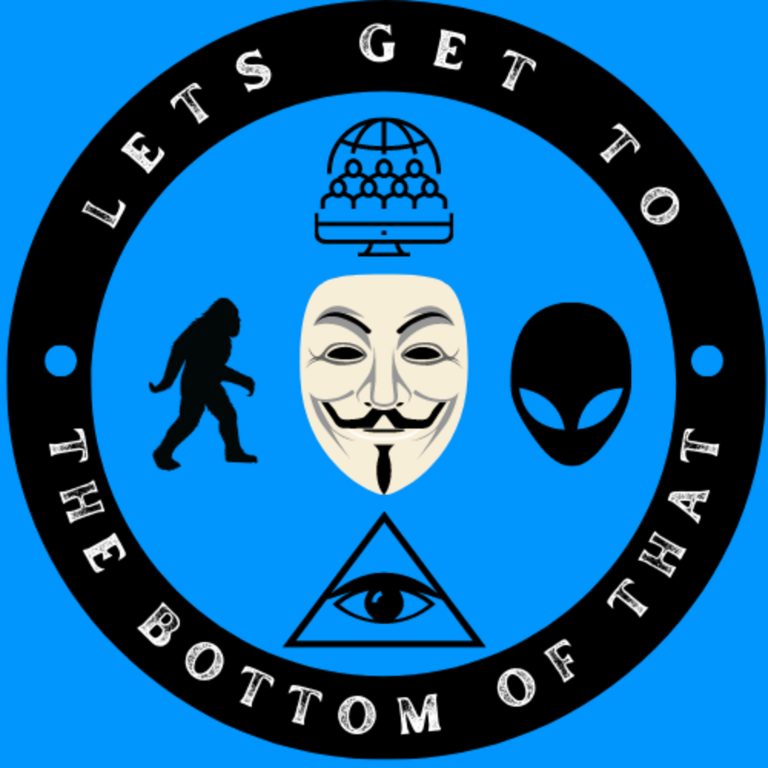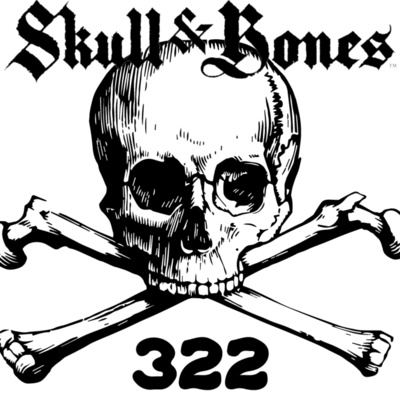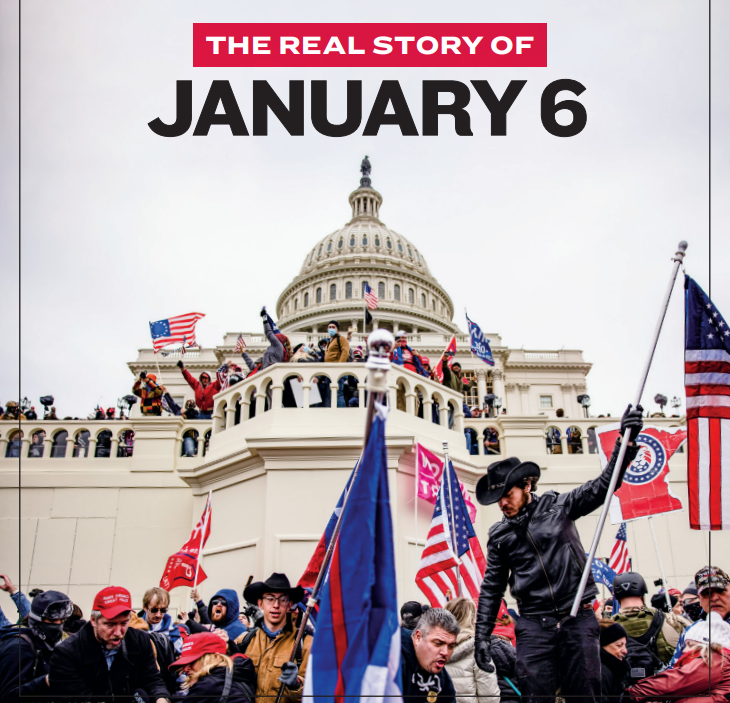
This show will get to the bottom of all those questions you need answers to. Each week we will cover a topic that has been left out in the public square unattended and covered with questions from the “official story” You will be able to determine on this show if the topic has been deemed a “Conspiracy” or a “Conspiracy Theory”.
What is it about Skull & Bones that strikes both fear and silence in all but the most casual observer? Is it the death-obsessed emblems surrounding so much of their fantastic lore, including rumors of harboring the mortal remains of some of America’s most beloved heroes? Is it the tight-lipped secrecy that surrounds the group, so much that questioning rumors of affiliation have resulted in more than a handful of job firings? Or is it a historically traceable connection between its members and the upper echelons of international power, a power that has grafted itself by dint of affiliation to key leadership positions in the very same groups we have been covering in this series? After all, it’s just a harmless college fraternity, isn’t it? All good fun and games, if slightly more morbid than most. Well on today’s show, you may find yourself grateful that binge drinking and a sliding GPA might be the biggest worries about your son while he’s away at school.
Start of Topic at 06:25

Origins of Skull & Bones
Technically, the Skull & Bones society is not an undergraduate fraternity. Membership is by invitation only and only extended to 15 inductees a year, and for that solely within their junior year. Furthermore, both current and historical membership rosters are kept completely private. There is no official mission statement for the Skull & Bones society, and the organization refuses to divulge its activities. Nor are their assets managed by Yale University, but by a private trust known as the Russell Trust Association (named after their co-founder and incorporated in 1856.) In fact, for many years both the society as well as Yale University refused to acknowledge the very existence of the group. The Skull & Bones society was founded in 1832 as ‘The Order of Skull & Bones’—or ‘Bones’ as it is informally referred to—by Yale students William Huntington Russell and future U.S. Secretary of War and Freemason Alphonso Taft (father of President William Howard Taft—who, in keeping with family tradition was himself both a Skull & Bones member as well as a Freemason.) It is uncertain the purpose behind the design of the group—allegedly it was after a dispute over that year’s Phi Beta Kappa awards, although it seems more likely it was established much like how many fraternities are established; as a mutual aid society of undergraduates banding together for fellowship and companionship. Albeit with strict criteria—in 1882, at least four prospective candidates had to be selected from student publications and at least four others had to be selected from captains of Yale’s sporting teams—and a much more ghoulish motif than most. Equally enigmatic is their famed emblem; a skull and bones underneath which is emblazoned the mysterious numerical legend 322. One suggestion is that the skull and bones represent the oath of mortality that recruits are sworn to keep silent, while the numbers represent the year and the initial two founders. Other, perhaps far-fetched, theories have included that the skull is an allusion to the famed head of ‘Baphomet’ allegedly idolized by the Knights Templar while the bones represent the shape of the cross upon which Roman emperor Constantine was crucified upon. Others claim the numbers refer to the death of famed Greek orator Demosthenes, to a complex numerical code having magical significance (it is worth noting that the skull and crossbones motif is found in numerous other secret societies from the Knights of Pythias to the “Chamber of Reflection” found in Masonic initiations.) The Skull & Bones Hall is referred to as “The Tomb” and bears considerable Egyptian and Greek influence upon its facade. Entrance into the Tomb is strictly forbidden to non-members, although it has been referred to as “something like a German beer hall,” with bizarre passageways, imposing statues of knights in armor, and a mysterious chamber replete with candles, coffins, skeletons, a chopping block, bats and a basin containing a red fluid. In this chamber, candidates have been known to be divested of metal jewelry (a trait common to all Masonic initiations) where they are placed into the coffin, ‘chanted’ over, and ‘reborn’ again into a society where they are given a robe embroidered with arcane symbols. A bone with the candidate’s name engraved upon it is then thrown into a heap of other bones, symbolizing his or her (Yale became a co-ed campus in 1969, although the Skull & Bones society refused to accept female members until a lawsuit in 1991) link to the fraternity, which is hauled out at the initiation of each and every meeting. The candidate is then given a secret name, often of mythological, historical or literary import—examples being Hamlet, Thor, Shakespeare, Sancho Panza, Baal, Magog or the distinctly Masonic Boaz—with which he or she will be known to as other members. They are also expected to complete a detailed, two-night description of his sexual activity and autobiography, fears and motivations at some point in the coming year, lending on the all the more incongruous appearance of an encounter group session to the already bizarre atmosphere.
The controversy of Skull & Bones
Critics are quick to point out that the activity of a student-sponsored privately run “society” based on exclusivist principles—which leans heavily towards White Protestant males—on university grounds is at odds with the inclusivist nature of the modern American educational system. This however, is nothing more than a straw man argument for the dangers which burrow beneath this garish and grotesque melange of high privilege and entitlement. As early as 1873, allegations were being lodged against the group (who informally call themselves ‘Bonesmen’) that they were made privy to student funds directed to the University for their own usage and that there was a disproportionate tendency for its alumni to be selected for key positions in finance over other Yale graduates. More serious criminal charges have been lodged against the group, alleging that grave-robbing was a regular initiation practice for prospective candidates and that the group currently houses the remains of Apache leader Geronimo (it is widely held that U.S. Senator and known Bonesman Prescott Bush—father and grandfather of future presidents George H.W. Bush and George W. Bush respectively, themselves also known Skull & Bones members—was responsible for the theft), former President Martin van Buren and Mexican revolutionary Pancho Villa. Still, others have lodged the allegations that rape and kidnapping are also commonplace initiatory trials prospective candidates are expected to undertake in order to prove both their worthiness as well as their identifiably “elite” natures as future leaders in the fields of politics and industry by placing themselves outside the confines of the law, silencing their victims with immeasurably deep funds. “Rape is so commonplace on campuses, to begin with,” alleges one victim, “that even on Yale you’re going to find it. But with Bonesmen it’s different. They truly think they’re above the law. And with all the money that floats in and out of the Tomb, you start to wonder maybe that really is the case.” Or, as one former member put it in a 1977 article, “it’s like trying to look into the Mafia, remember they are a secret society as well”.
However, allegations and hearsay are one thing. Proven claims—based not on conjecture, but verifiable documentation—reveal a curious web of nepotism and cronyism that unquestionably link Skull & Bones to other groups previously covered in this series, confirming the group’s reputation of manipulation, favoritism, and exclusivity. One of the co-founders of the Council on Foreign Relations was Secretary of State under Theodore Roosevelt Elihu Root. While serving as a state attorney, Root hired a Bonesman named Henry Stimson to serve on his council. Stimson later went on to serve as Secretary of War under fellow Bonesman William Howard Taft, and eventually Secretary of State under Herbert Hoover—himself a co-founder of the Council on Foreign Relations. Stimson was eventually nominated as Secretary of War a second time, serving under two presidents—Franklin Delano Roosevelt (whose links to the Illuminati were explored in Chapter Three) and Harry S. Truman (a known Freemason)—during America’s entry into World War II, where he was one of the leading advocates not only for war against Germany but also the construction of the atomic bomb. Stimson’s point man for the Pentagon for the Manhattan Project (which oversaw the development of the atomic bomb) was a fellow Bonesman named Harvey Hollister Bundy. Bundy’s two sons, William and McGeorge—both also notable members of Skull & Bones—later went on to serve key roles as CIA and foreign affairs advisors to Presidents Kennedy and Johnson during America’s entrance into the Vietnam conflict. Not surprisingly, both also went on to hold key roles in the Council on Foreign Relations (William Bundy was editor of the Council’s publication Foreign Affairs, and was noted for once stating that the “role of government is to stimulate a mass-scale change in attitude.”) It may be no coincidence that McGeorge Bundy was later to serve as President of the Ford Foundation, whose links to the Trilateral Commission, the Council on Foreign Relations and the Illuminati have been ably documented already. The Stimson-Bundy family link isn’t the only hereditary link in the Skull & Bones chain to worm its way through the upper levels of political, military, and defense intrigue. For that, we need only observe the curious relationship between the Harriman family (of international bankers Brown Brothers and Harriman fame) and the political dynasty of the Bush family. A link, curiously enough that had ties to both the regimes of Nazi Germany and the Communist USSR—both allegedly, “enemies” of American interests. Brown Brothers Harriman—currently the oldest and largest private bank in the U.S.—was formed after the merger of two entities, Brown & Brothers and A.W. Harriman & Co. in 1931. The founding partners of this merger included 8 members of Skull & Bones, most notably Prescott Bush (who we have already been introduced to) and future Ambassador to the U.S.S.R, W. Averell Harriman. In 1942, an executive order signed by President Roosevelt seized the property of Prescott Bush, who also served as Director for the Union Banking Company of New York, under charges of ‘trading with the national enemy.’ The reason for the seizure was that Union Banking was also the asset clearing and holding house for German steel magnate Fritz Thyrssen, which had been funding Hitler since 1924. Inexplicably, Prescott Bush went on to be elected U.S. State Senator, later claiming responsibility for launching Richard Nixon’s into politics (Nixon’s links to David Rockefeller have been amply detailed, to mention nothing of the role Secretary of State Henry Kissinger has played in numerous groups detailed elsewhere in this book) and, coincidentally, serving as the first treasurer on the national campaign for Planned Parenthood in 1947 (whose links to the Van Duyn bloodline of the Illuminati were explored in Chapter Three.) We’ll go over the exploits of Prescott’s Skull & Bones legacy-carriers, George H.W. and George W., shortly but for now, let’s turn our attentions back to one W. Averell Harriman. As mentioned earlier, Harriman served as U.S. Ambassador to the U.S.S.R under President Truman. Yet prior to this, the company that Harriman formed, Brown Brothers Harriman, also owned the previously mentioned Union Banking. During his tenure as U.S.S.R Ambassador, Harriman was responsible not only for maintaining relatively cordial relations with Stalin, but also shipping entire factories into Russia. Upon his return to the U.S., Harriman began working closely with the Council on Foreign Relations, despite being adamantly referred to as a Soviet spy by former KGB Major-turned-defector Anatoliy Golitsyn. Some research recently uncovered also indicates that Harriman may have had a direct role in the transfer of nuclear plans and U.S. dollar printing plates to Soviet Russia during the Cold War. One of Brown Brothers Harriman’s directors was Robert Lovett, himself a Bonesman. Lovett was a chief advisor to Truman regarding the re-organization of American intelligence agencies immediately following World War II. It was at Lovett’s insistence that the CIA was formed in 1947, and the agency was soon populated by such a disproportionate number of Skull & Bones members that Yale Professor of History Gaddis Smith was once prompted to remark, “Yale has influenced the Central Intelligence Agency more than any other university, giving the CIA the atmosphere of a class reunion.” One CIA-operated project was the notorious MK-ULTRA; a covert psychological operations experiment during the 1950s and 1960s, the full extent of which we are still uncovering to this day. The project entailed the use of powerful psychotropic drugs, isolation chambers, brainwashing techniques and other methods of psychological manipulation and control (much of it administered at mental institutions such as Bridgewater State Hospital in Massachusetts), and was financed by and large by the “independent” H. Richardson Foundation; a foundation established by one Eugene Stetson, an Assistant Director under Prescott Bush, and a Skull & Bones alumni himself. Other alumni from the Skull & Bones roster filling the ranks of the CIA have included F. Trubee Davison (CIA Personnel Director starting in 1951), William Sloane Coffin, Jr. (CIA agent, 1950-1953), William Francis Buckley (CIA agent 1956-1970, Station Chief in Beirut 1983-1985), Hugh Cunningham (CIA agent 1950-1973), Charles Whitehouse (CIA agent 1947-1956 and U.S. Ambassador to Laos and Thailand in the 1970s; a time that coincidentally saw a substantial rise in heroin trafficking from that region); Dino Pionzio (CIA Station Chief in Santiago Chile 1970-1975; a time that coincidentally saw the overthrow of the Allende regime by a bloody coup d’etat and its replacement by the notoriously bloodthirsty Augusto Pinochet), former U.S. Senator David Boren (CIA Committee member 1985-1999), and, of course, future President George H.W. Bush (CIA Director 1976-1977). There is considerable controversy regarding Bush’s tenure in the CIA. Uncovered evidence indicates that he may have been involved as early as 1963, in particular with a counter-intelligence unit code-named ‘Pegasus’ implicated in a potential plot to assassinate President Kennedy according to transcripts of tapes obtained from a tap on the phone of FBI Director J. Edgar Hoover; transcripts which include the names of Hoover, future Vice President (and brother of David) Nelson Rockefeller, CIA Director (and Council on Foreign Relations Director) Allen Dulles, and one “George Bush” of the CIA. Both Bush and the CIA have implicitly denied the allegations of the existence of both Pegasus and Bush’s involvement prior to his nomination as Director in 1976; which, as an intelligence agency responsible for disambiguation of both information and misinformation, naturally befits a secret organization. One thing is for certain; the invocation of a ‘New World Order’ raised many an eyebrow when Bush delivered his famed address before congress on September 11, 1990 (exactly 11 years prior to the date of the 9/11 attacks on the World Trade Center; a date forever ingrained with many Americans as the rationale behind Bush’s son George W.’s entrance into the Afghanistan conflict and subsequent war on Iraq.) In it, the senior Bush justified his invasion of Iraq precipitation the Persian Gulf Crisis of 1990-1992 with the following words: “A new partnership of nations has begun, and we stand today at a unique and extraordinary moment. The crisis in the Persian Gulf, as grave as it is, also offers a rare opportunity to move toward a historic period of cooperation. Out of these troubled times, our fifth objective—a new world order—can emerge: A new era—free from the threat of terror, stronger in the pursuit of justice, and more secure in the quest for peace… America and the world must defend common vital interests. And we will… Americans have stepped forward to share a tearful goodbye with their families before leaving for a strange and distant shore. At this very moment, they serve together with Arabs, Europeans, Asians, and Africans in defense of principle and the dream of a new world order. That is why they sweat and toil in the sand and the heat and the sun.” The ‘New World Order’ is, of course, a phrase most commonly associated with the Illuminati. And it is equally indicative of the ultimate goal of all globalist and international institutions who strive to forge a new era; perhaps one of peace, justice, and prosperity. But only to those who can afford it. There have been approximately 7,000 U.S. casualties to date resulting from both the Persian Gulf Crisis of 1990-1991 and the ongoing US Wars on Afghanistan and Iraq since 2001. How many were lost for “the quest of peace”; and how many were lost for the sake of a ‘New World Order’?
Dangers of Skull & Bones
It is all too tempting to view Skull & Bones as a breeding ground for future recruits into the Illuminati or conversely, more overt societies such as the Trilateral Commission, the Council on Foreign Relations, or even (as amply demonstrated by this chapter) the CIA. It seems that given the vast links and behavior of Skull & Bones alumni, one would be hard-pressed to find an outfit more smug about their elitism, secrecy, and implication in a tangled web of conspiracy and duplicity at the highest levels of American political intrigue; a smugness and arrogance the organization has done little to dispel in the 180-plus years of their existence. During the Regent degree of the Illuminati, the candidate, after being directed to a skeleton, is asked “Whether there lies the body of a king, nobleman, or beggar?” His expected answer is that “The character of being a man is the only one that is of importance.” The legend engraved on the inner chamber of the Skull & Bones Tomb reads: “Wer war der Thor, wer Weiser, Bettler oder Kaiser? Ob Arm, ob Reich, im Tode gleich.” A rough translation of which is, “Who was the fool, who the wise man, beggar or king? Whether poor or rich, all’s the same in death.”
Members
In addition to the previously named parties, other members of Skull & Bones have included: investment banker and founder of Morgan Stanley Harold Stanley; Time-Life magazine founder Henry Luce (a member of the Council on Foreign Relations); NY Mets co-founder (and uncle of George H.W. Bush) George Herbert Walker, Jr.; writer Archibald MacLeish; Banker and Dean Witter founder Dean Witter, Jr.; former Senator and Heinz heir H. John Heinz; Secretary of State John Kerry; former Federal Reserve chairman Pierre Jay; co-founder of the Council on Foreign Relations Charles Seymour; publisher, creator of the Fortune 500 Russell Davenport (also a member of the Council on Foreign Relations); former Senators John Patton Jr., James Buckley, John Chafee and Victor Ashe; Sears Chairman Edward Lampert; FedEx founder Frederick Wallace Smith; former U.S. Ambassadors David Thorne, Winston Lord, Evan Galbraith and James Jeremiah Wadsworth; National Review founder William F. Buckley, Jr.; Cornell University co-founder Andrew Dickson White; and U.S. Trust President Daniel Davison.


